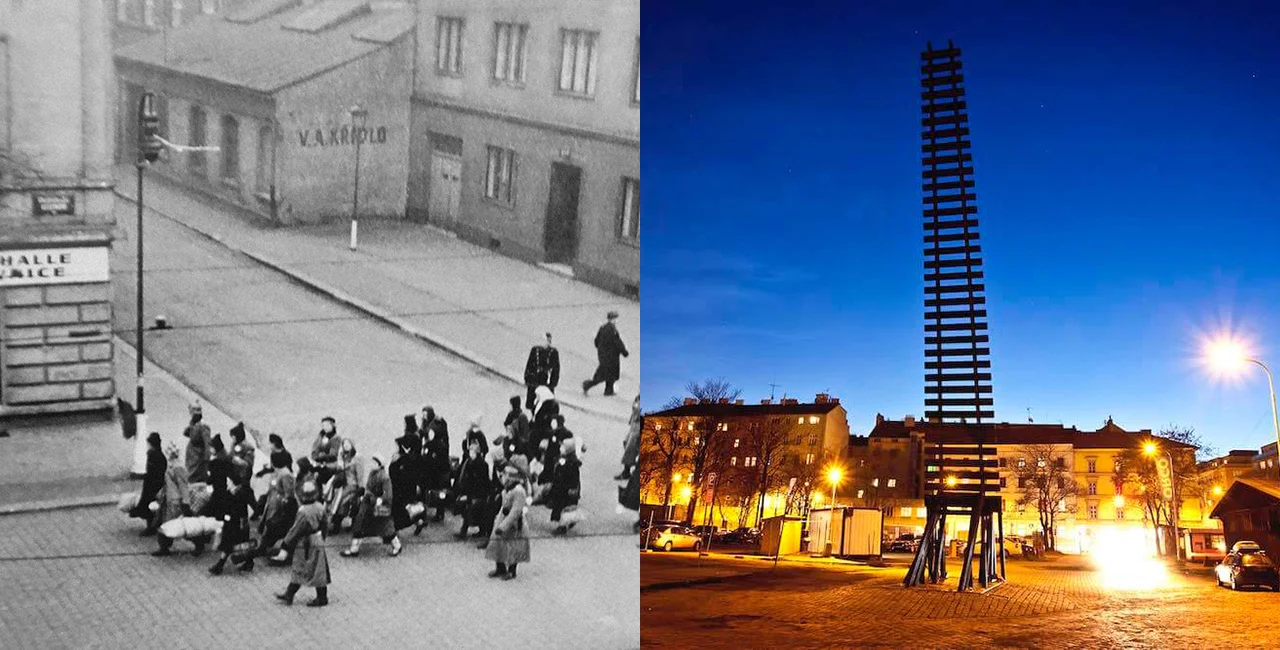Two exhibitions have opened at Prague’s Bubny Memorial of Silence, and will run to October 31. One shows previously unseen photos related to the Holocaust, and the other explores the idea of transience.
Due to the current situation with the coronavirus pandemic, both will also soon be made available online and over social media for people who don’t wish to go in person. Details will be released on the memorial’s website and Facebook page.
The former train station at Bubny in a brownfield in Prague’s Holešovice district was a transit point during the Holocaust. Now it serves as the Bubny Memorial of Silence (Památník ticha Bubny).
The exhibition Images and Voices of Bubny (Obrazy a hlasy Bubnů), held in the attic of the station, shows never before seen photographs from the collection of Jaroslav Čvančara. These depict a train transporting Jews passing through the intersection of U Smaltovny and Veletržní streets near the Bubny station.
These are the only known images of Jewish transports at Bubny. Čvančara does not know the original source of the photos, and for decades they had been misidentified as pictures of a train passing through Bohušovice nad Ohří. Researchers hope to eventually identify the photographer and other details.
These are shown together with a newly found photographs from a family album of deported journalist Milan Weiner. These images from inside the Terezín (Theresienstadt) ghetto are the only ones known to authentically depict the circumstances there. Weiner, who was friends with writer Arnošt Lustig, survived the Holocaust but died in 1969 of cancer.
The exhibition also includes the mini-exhibits Latent Images of Terezín by photographer Richard Homola, showing close details of the Terezín barracks, and Babí Jar by photographer Karel Cudlín, with photos of the site in Ukraine where 30,000 people were massacred in 1941.
The Polish Institute lent its traveling exhibition Passports for Life, documenting a group that made fake passports, and Together in Bubbles, which uses the form of a graphic novel to tell the story of two Polish heroes.
There is also a series of photographs by Jan Lukas with texts by Ondřej Kundra called The Double Life of Vendulka V.
The exhibition Layers of the City's Memory – Transience (Vrstvy paměti města – Pomíjivost) is held in the outdoor space of the former station. It explores the stories of transient sculptures. Sculptures were placed around the station several years ago, and left intentionally without maintenance. Now, they have almost become one with the environment, decaying and surrounded by shrubs.
The October 6 opening of the exhibition was held online, without visitors. There will be several guided tours of the exhibit, in Czech, but people are urged to register in advance as space will be quite limited.
The exhibitions are open on Fridays from 2 pm to 6 pm and weekends from noon to 5 pm. For those who want to see them in person, online reservations are needed via email at rezervace@bubny.org.
In the long term, the station will be renovated into a modern gallery hosting a permanent exhibition on the Holocaust. The surrounding area will also be developed into a new neighborhood.












 Reading time: 2 minutes
Reading time: 2 minutes 


























